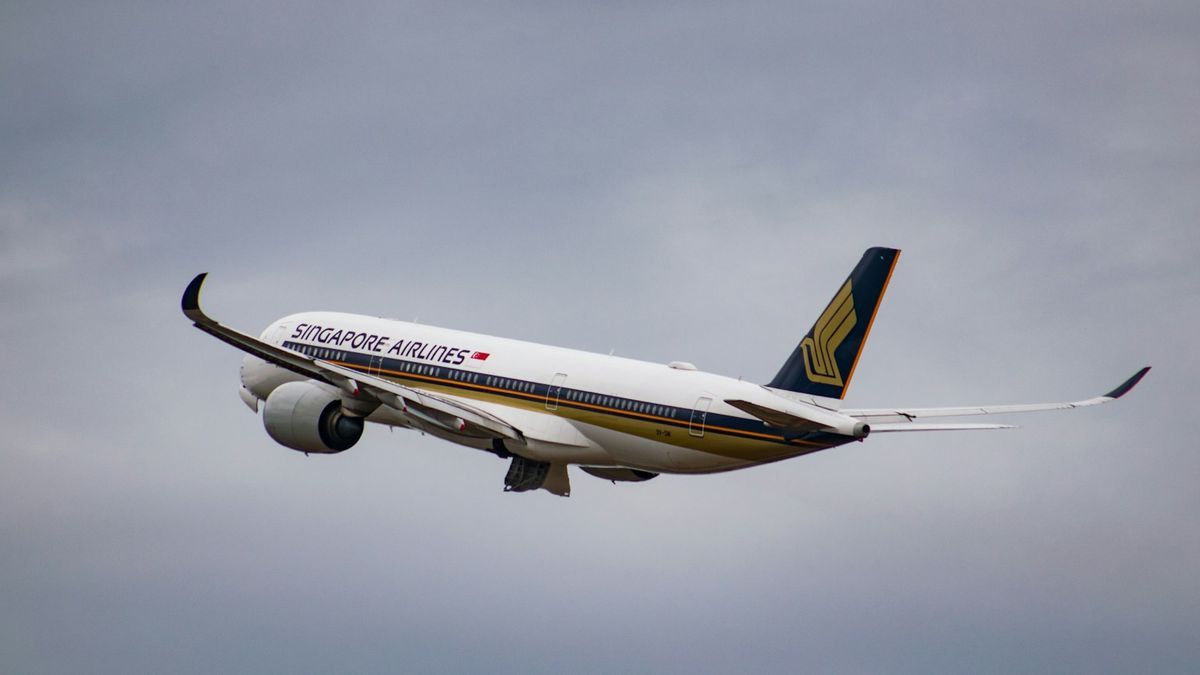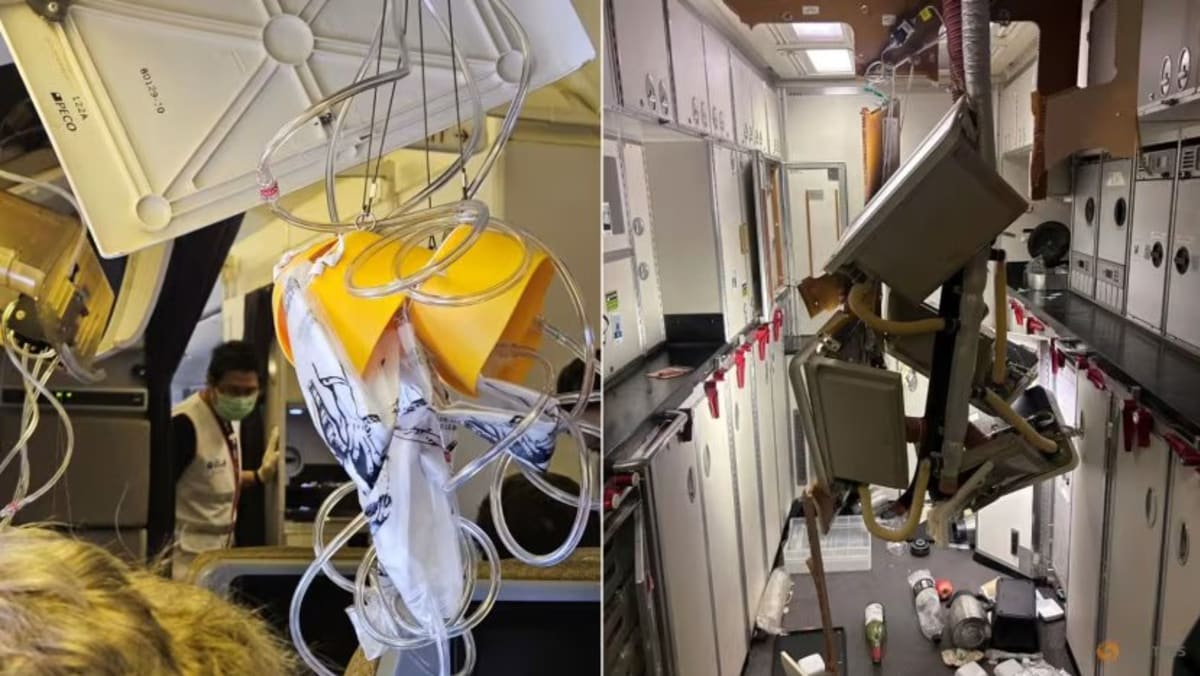Singapore Airlines Flight History of Severe Turbulence: Severe Turbulence Singapore Airlines

Severe turbulence singapore airlines – Singapore Airlines has a good safety record, but the airline has experienced a number of incidents of severe turbulence over the years. These incidents have resulted in injuries to passengers and crew, and in some cases, have caused damage to the aircraft.
The most serious incident of turbulence experienced by Singapore Airlines occurred on October 10, 2001. Singapore Airlines Flight 006 was en route from Singapore to Los Angeles when it encountered severe turbulence over the Pacific Ocean. The turbulence caused the aircraft to drop suddenly, injuring 119 passengers and crew members. The aircraft was able to land safely in Los Angeles, but the incident resulted in a number of lawsuits against Singapore Airlines.
Severe turbulence on Singapore Airlines flights can be a harrowing experience. But it’s important to remember that turbulence is a common occurrence in air travel, and it’s not something to be overly concerned about. In fact, turbulence singapore is generally considered to be less severe than in other parts of the world.
Nevertheless, it’s always a good idea to be prepared for turbulence, and to take precautions to minimize your risk of injury.
In addition to the October 2001 incident, Singapore Airlines has experienced a number of other incidents of severe turbulence in recent years. These incidents include:
- Singapore Airlines Flight 321: On August 24, 2004, Singapore Airlines Flight 321 encountered severe turbulence over the Bay of Bengal. The turbulence caused the aircraft to drop suddenly, injuring 10 passengers and crew members.
- Singapore Airlines Flight 211: On February 25, 2005, Singapore Airlines Flight 211 encountered severe turbulence over the South China Sea. The turbulence caused the aircraft to drop suddenly, injuring 15 passengers and crew members.
- Singapore Airlines Flight 368: On March 21, 2015, Singapore Airlines Flight 368 encountered severe turbulence over the Indian Ocean. The turbulence caused the aircraft to drop suddenly, injuring 12 passengers and crew members.
The incidents of severe turbulence experienced by Singapore Airlines are a reminder that even the safest airlines can experience unexpected events. Passengers should be aware of the risks of turbulence and should take precautions to protect themselves in the event of an incident.
Turbulence has been a persistent issue for Singapore Airlines, with recent incidents on Singapore Airlines flight SQ321 making headlines. This ongoing problem raises concerns about the safety and comfort of passengers on Singapore Airlines flights, underscoring the need for the airline to address the root causes of this turbulence and implement effective measures to mitigate its impact.
Singapore Airlines Flight History of Severe Turbulence
| Flight Number | Date | Route | Severity | Passenger Accounts |
|---|---|---|---|---|
| SQ006 | October 10, 2001 | Singapore to Los Angeles | Severe | 119 passengers and crew members injured |
| SQ321 | August 24, 2004 | Singapore to Sydney | Severe | 10 passengers and crew members injured |
| SQ211 | February 25, 2005 | Singapore to Hong Kong | Severe | 15 passengers and crew members injured |
| SQ368 | March 21, 2015 | Singapore to Mumbai | Severe | 12 passengers and crew members injured |
Causes of Severe Turbulence over Singapore
Severe turbulence over Singapore is a result of complex meteorological conditions that create strong updrafts and downdrafts in the atmosphere. These conditions include wind shear, thunderstorms, and jet streams.
Severe turbulence on Singapore Airlines flights has been a rare but concerning issue, with recent incidents sparking discussions about turbulence singapore airlines . These incidents have highlighted the need for increased awareness and preparedness among passengers, as well as the importance of effective communication and response from the airline in the event of severe turbulence.
Wind Shear
Wind shear refers to the difference in wind speed and direction over a short distance. When there is a significant difference in wind speed or direction between two layers of air, it can create turbulence. Wind shear is common in Singapore, especially during the monsoon seasons, when strong winds from different directions converge.
The recent severe turbulence experienced by Singapore Airlines has raised concerns about the safety of air travel. However, it’s important to note that such incidents are rare. In fact, a greenfield iowa map shows that the area is relatively safe for air travel.
The map indicates that there have been no major incidents in the area in recent years. This suggests that the recent turbulence experienced by Singapore Airlines was an isolated incident.
Thunderstorms
Thunderstorms are another major cause of turbulence over Singapore. The updrafts and downdrafts associated with thunderstorms can create severe turbulence, especially when the thunderstorms are intense.
As the Singapore Airlines flight encountered severe turbulence, passengers gripped their seats tightly. The plane lurched violently, sending luggage and drinks flying. Amidst the chaos, news of a devastating tornado in Iowa flashed across the screens. Thoughts of the destruction and fear in the Midwestern state momentarily overshadowed the turbulence, reminding passengers of the fragility of life.
As the plane steadied, the reports of the Iowa tornado today lingered in their minds, a stark reminder of the unpredictable forces of nature that could strike at any moment, even thousands of miles away.
Jet Streams
Jet streams are narrow bands of high-altitude winds that flow around the globe. When jet streams interact with other weather systems, they can create turbulence. Jet streams are often present over Singapore, and they can contribute to turbulence, especially during the winter months.
The diagram below illustrates the causes of turbulence over Singapore:
[Image: Diagram of the causes of turbulence over Singapore]
The diagram shows the different meteorological conditions that can contribute to turbulence over Singapore. The red arrows represent wind shear, the blue arrows represent updrafts and downdrafts associated with thunderstorms, and the green arrows represent jet streams.
Safety Measures Implemented by Singapore Airlines
Singapore Airlines prioritizes passenger safety and has implemented a comprehensive suite of safety measures to mitigate the risks associated with severe turbulence. These measures encompass pilot training, aircraft maintenance, and passenger safety procedures.
Pilot Training
Singapore Airlines pilots undergo rigorous training programs that equip them with the skills and knowledge necessary to handle turbulence effectively. They receive specialized training on weather forecasting, turbulence detection, and emergency procedures. Additionally, pilots participate in regular simulator training sessions to practice responding to various turbulence scenarios.
Aircraft Maintenance
Singapore Airlines maintains its fleet of aircraft to the highest safety standards. Aircraft are regularly inspected and undergo thorough maintenance checks to ensure their structural integrity and functionality. The airline also utilizes advanced technology to monitor aircraft performance and identify potential issues early on.
Passenger Safety Procedures
Singapore Airlines has established clear safety procedures for passengers during turbulence. Cabin crew members provide regular safety briefings and instruct passengers on how to fasten seatbelts, stow loose items, and assume the brace position if necessary. The airline also provides passengers with comfort kits that include items such as eye masks and earplugs to help reduce anxiety during turbulence.
Passenger Experiences and Coping Mechanisms

Severe turbulence can be a frightening experience for passengers, leading to physical and emotional distress. Here are some personal accounts and coping mechanisms shared by individuals who have encountered severe turbulence on Singapore Airlines flights:
Passenger Experiences
“The plane suddenly dropped, and I felt like I was going to be thrown out of my seat. I couldn’t breathe, and I thought I was going to die.”
– Passenger on Singapore Airlines Flight SQ321
“I was holding my baby in my arms, and I was terrified. The turbulence was so bad that I couldn’t even hold onto her properly. I thought we were all going to crash.”
– Passenger on Singapore Airlines Flight SQ222
Coping Mechanisms, Severe turbulence singapore airlines
Coping with turbulence during a flight can be challenging, but there are several strategies that can help:
- Stay calm and focus on your breathing. When you feel anxious, your body goes into “fight or flight” mode, which can make the turbulence feel worse. Try to relax and focus on taking deep, slow breaths.
- Stay hydrated. Dehydration can make you feel more anxious and dizzy, so it’s important to stay hydrated during a flight. Drink plenty of water or juice.
- Use a pillow or blanket to support your head and neck. This can help to reduce the impact of the turbulence on your body.
- Listen to music or read a book. This can help to distract you from the turbulence and make the flight go by faster.
- Talk to a flight attendant. If you’re feeling anxious, don’t hesitate to talk to a flight attendant. They can provide reassurance and help you to stay calm.
Comparison to Other Airlines
Singapore Airlines boasts an exemplary safety record, consistently ranking among the world’s safest airlines. Its meticulous maintenance procedures, stringent pilot training programs, and advanced aircraft technology contribute to its exceptional safety record.
In terms of passenger experiences during severe turbulence, Singapore Airlines has earned a reputation for prioritizing passenger comfort and well-being. Its cabin crew is highly trained to handle such situations with professionalism and composure, providing reassurance and assistance to passengers throughout the flight.
Safety Record
The following table compares the safety records of Singapore Airlines and other major airlines:
| Airline | Safety Record |
|---|---|
| Singapore Airlines | Exemplary, consistently ranking among the world’s safest airlines |
| Emirates | Excellent, with a strong focus on safety and innovation |
| Qatar Airways | Exceptional, known for its state-of-the-art aircraft and rigorous safety standards |
| ANA (All Nippon Airways) | Outstanding, with a long history of safe operations and a commitment to continuous improvement |
| Cathay Pacific | Excellent, with a comprehensive safety management system and a focus on employee training |